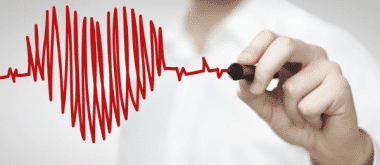A medical condition known as Vulvar and Vaginal Atrophy (VVA) can affect aging women during and after menopause and cause unpleasant discomfort.
An Overview of Vulvar and Vaginal Atrophy (VVA) and Menopause
VVA occurs when the structures inside the vulva (the external portion of a woman’s reproductive system) and vagina become thin and weaken. This typically occurs after the menopausal stage commences. Menopause, a natural life event that begins during the late forties or early fifties, occurs when the reproductive system gradually ceases production of sexual and reproductive hormones and ends a woman’s ability to bear children.
VVA Symptoms
A weakened vulva or vaginal region could precipitate several uncomfortable, bothersome and, in some cases, life-altering physical manifestations. Common symptoms include vaginal or abdominal pain, vaginal dryness, itching, urinary problems, inflammation, burning, light bleeding, discharge, and the increased risk of developing urinary tract infections.
Arguably, however, the most significant manifestations some individuals experience are sexual. The discomfort VVA causes can precipitate pain during intercourse. In fact, VVA can make sex painful enough that some affected persons refrain from the once-enjoyable activity altogether.
Causes
The most direct cause of VVA is a decreased bodily production of estrogen. Estrogen plays a crucial role in helping structures like the vulva and vagina remain firm and malleable. Aside from menopause, a precipitous decline in estrogen might be caused by the removal of the ovaries, various forms of cancer, cancer treatments and specific drugs. In addition to declining estrogen levels, specific risk factors could elicit or exacerbate VVA; some of these include smoking (which deprives the vaginal region of oxygen), not giving birth or a lack of sexual activity (which is said to decrease blood flow to the area).
Treatment Options

Medical therapies might include medications designed to alleviate vaginal dryness and itchiness. These remedies are often administered with creams, skin patches or gels. Individuals experiencing more serious symptoms might choose to undergo estrogen-replacement therapy. While restoring lost estrogen levels may prove effective in combating VVA manifestations, this solution also poses certain health risks, such as the development of blood clots and an increased risk of developing certain types of cancer.
Some afflicted individuals attempt to stymie VVA using natural methods. These endeavors can include the following:
- Remaining Sexually Active: Sexual activity stimulates blood flow to the vaginal region, which helps the structures maintain a certain degree of strength.
- Exercising: Women who regularly partake in physical activity can not only strengthen vaginal and abdominal muscles but also help regulate their bodies’ hormonal levels.
- Staying Hydrated: Proper hydration is critical to ensuring the vaginal region remains as moist as possible.
- Quitting Smoking: Cigarette smoking is known to further deplete estrogen concentrations and deprive the vaginal region from receiving critical oxygen. Either effect can result in VVA for menopausal women.
- Applying Natural Lubricants: Creams and salves containing natural ingredients, like coconut, aloe vera and vitamin E, are thought to soothe the burning, itching and pain associated with VVA.
- Ingesting Probiotics: Certain healthcare professionals opine that probiotics, bacteria deemed beneficial to bodily functions, can help ease vaginal dryness and some of the urinary problems patients with VVA might experience.
Prevention
Considering that VVA is often a manifestation of the menopausal transition, preventing its onset might be difficult. However, menopausal and post-menopausal women are advised to pay attention to their health and, should symptoms develop, bring them to the attention of a healthcare provider. The physician can then diagnose the condition and work with the patient to tailor a treatment option best suited for the patient’s needs.





